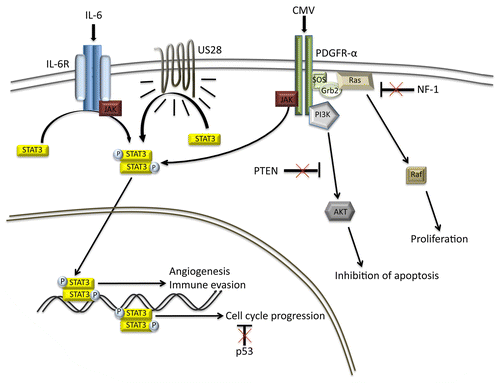Figures & data
Figure 1. Mechanisms of STAT3 activation by CMV. Cytomegalovirus (CMV) can activate signal transducer and activator of transcription 3 (STAT3) in glioblastoma multiforme (GBM) cells by 3 different mechanisms. CMV-infected cells secrete increased levels of interleukin-6 (IL-6), stimulating signal transduction via the IL-6 receptor (IL6R)-STAT3 axis.Citation8 US28 is a CMV-encoded constitutively active chemokine receptor that is capable of activating STAT3.Citation9 The CMV virion can activate STAT3 via platelet-derived growth factor receptor α chain (PDGFRα), presumably by means of the viral surface glycoprotein B.Citation10 The combination of STAT3 activation and oncosuppressor gene loss significantly exacerbates the malignancy of GBM cells.
